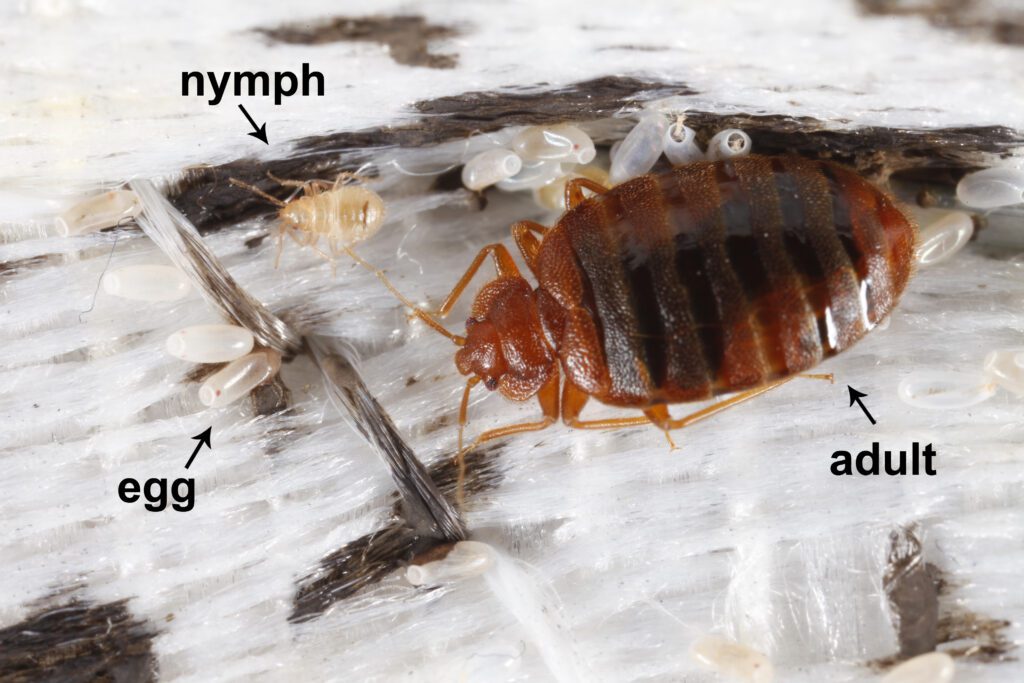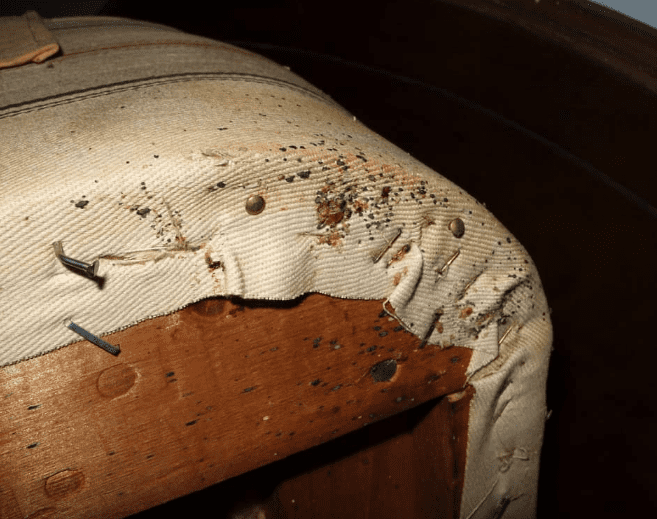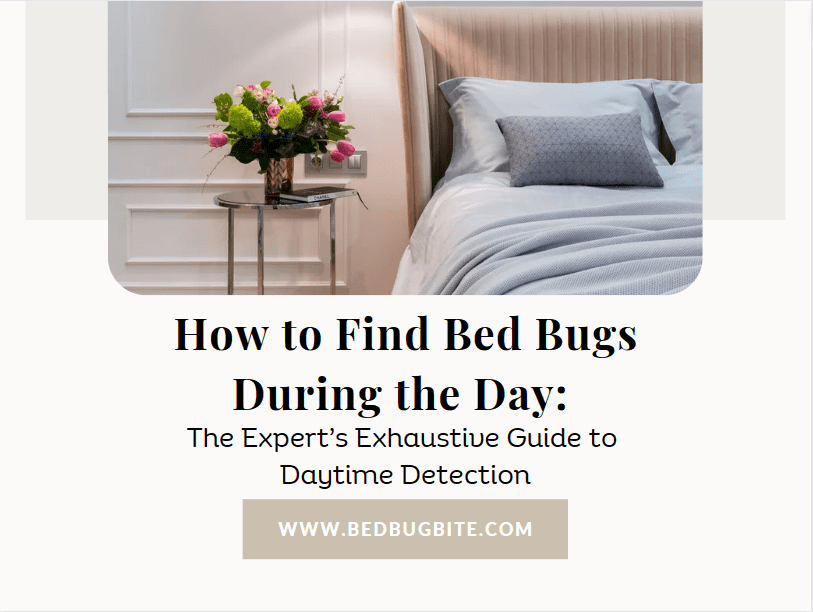Introduction
Dealing with bed bugs can be an unsettling experience. Although these pesky critters are generally nocturnal by nature, circumstances may require you to conduct a daytime search. In fact, identifying bed bugs during the daylight hours could offer you a strategic advantage in tackling your infestation issue. After all, the element of surprise is on your side. This expert guide aims to equip you with the crucial know-how to effectively find bed bugs during the day, walking you through every essential step from proper inspection to clear identification and immediate action. According to the EPA’s Comprehensive Bed Bug Resource, one of the first steps in bed bug management is accurate identification. The methods discussed in this guide align with recommended best practices for detection, thereby allowing you to tackle your bed bug issue with utmost confidence.
Stay with us as we delve deep into the bed bug life cycle, uncover their most common hiding spots, introduce you to essential tools for your inspection, and provide a step-by-step strategy to identify these nuisances even under the sun’s watchful eyes. By the time you finish reading, you’ll be armed with actionable insights that are not only reliable but also exceptionally effective in solving your bed bug problem once and for all.
Ready to reclaim your peace of mind? Let’s dive in.
The Bed Bug Life Cycle: Know Your Enemy
Understanding the life cycle of bed bugs is not just academic; it’s a strategic necessity in your quest to eliminate these pests. Bed bugs pass through several stages, each with its unique set of characteristics. Broadly, the life cycle consists of eggs, nymphs, and adult bed bugs. Knowing how these stages differ can sharpen your inspection techniques and increase the likelihood of successful detection. Let’s delve into these categories.

Eggs
The genesis of a bed bug issue often lies in their eggs. Tiny and pearl-white, these eggs can be a challenge to spot without a keen eye. They are usually tucked away in dark, secluded areas. Identifying eggs can help you address an infestation at its root, preventing a larger outbreak.
Nymphs
Nymphs are juvenile bed bugs that have yet to reach maturity. They are generally smaller and lighter in color compared to their adult counterparts. As the Entomological Society of America notes, nymphs undergo five molting processes, gradually darkening before reaching adulthood. Your inspection must account for these harder-to-see juveniles, as overlooking them could result in an ongoing infestation.
Adult Bed Bugs
These are the culprits you’re most likely familiar with—reddish-brown, about the size of an apple seed, and notably more visible. Adult bed bugs are usually easier to detect, but they are also the ones that have the capability to lay eggs, continuing the life cycle.
Common Bed Bug Hiding Spots: Where to Look
Identifying common hiding spots for bed bugs is instrumental in your search, especially during the day when these nocturnal pests are lying low. Different areas in your home offer varying levels of concealment, making them prime real estate for bed bugs. Let’s break down these locations so you can conduct a systematic and exhaustive inspection.
Furniture: Cracks, Crevices, and Upholstery
Your furniture can often become a fortress for bed bugs. They tuck themselves into cracks and crevices in wooden frames, under cushions, and even inside the seams of your upholstered furniture. The key here is to inspect meticulously, paying attention to joints, folds, and hidden compartments. If your furniture is mobile, consider turning it over for a more thorough search.
Bedding: Mattresses, Box Springs, and Bed Frames

Bed bugs earn their name for a reason; they love hanging out where you sleep. The mattress, especially its edges and seams, offers an ideal hiding spot. But don’t stop there. Box springs and bed frames also need to be scrutinized. The Centers for Disease Control and Prevention emphasize the importance of checking the entire sleep area, including nearby curtains, as part of a thorough inspection.
Common Areas: Baseboards, Electrical Outlets, and Behind Wall Hangings
Surprisingly, bed bugs also find refuge in some of the most unsuspecting spots. Check along the baseboards, behind electrical outlets, inside electronics and even behind picture frames and wall hangings. These pests can squeeze into the tiniest spaces, so a comprehensive check of these areas is crucial.
Essential Tools for Daytime Bed Bug Inspection
Equipping yourself with the right tools can make all the difference in your daytime bed bug hunt. Having a specialized set of equipment ensures that you can investigate those hard-to-reach corners and identify bed bugs across all life stages with accuracy. Let’s discuss the must-haves for your inspection toolkit.
Inspection Tools: Flashlights, Magnifying Glasses, and Gloves
A powerful flashlight is indispensable for illuminating dark crevices and corners where bed bugs could be hiding. Magnifying glasses offer the added advantage of close-up inspection, making it easier to identify eggs and nymphs. Wearing gloves not only protects you but also avoids contaminating other areas. These are foundational tools that every seasoned inspector keeps at the ready.
Collection Tools: Ziplock Bags, Tweezers, and Small Containers
Once you’ve identified bed bugs, the next step is collecting samples for confirmation or for professional evaluation. Ziplock bags can be used for secure containment, while tweezers allow you to handle the bugs without direct contact. Small containers with lids offer a longer-term storage solution, especially if you’re planning to consult an exterminator. As affirmed by the National Pesticide Information Center, using a collection container can aid in making a more definitive identification.
In essence, having the right tools is integral to a successful daytime bed bug inspection. Being well-equipped streamlines the process, increasing your chances of locating these elusive pests and taking decisive action. Whether you’re a homeowner keen on resolving the issue yourself or looking to gather evidence for professional treatment, these tools are your first line of defense in tackling your bed bug problem effectively.
Step-by-Step Guide: How to Conduct a Daytime Bed Bug Inspection
Now that you’re equipped with essential knowledge and tools, it’s time to get down to the nitty-gritty: conducting the daytime bed bug inspection. A systematic approach ensures you’re thorough and effective, thereby increasing your chances of reclaiming your home from these resilient pests. Here’s a comprehensive, step-by-step guide to help you navigate this process.
Step 1: Prepare Your Space – Clearing the Clutter
Before you even start looking, you’ll need to prepare your space for inspection. Declutter the room to remove potential hiding spots and make your inspection more manageable. This involves tidying up clothes, moving furniture away from the walls, and getting rid of any unnecessary items. A clean, uncluttered environment minimizes the spaces where bed bugs can hide, making them easier to locate.
Step 2: Inspection Technique – Systematic Searching
Begin your inspection from a chosen corner of the room and proceed systematically to ensure you cover every possible inch. Use your flashlight to illuminate dark areas and the magnifying glass for closer inspection of suspicious spots. Make a mental or physical checklist of the areas you’ve inspected for better organization.
Step 3: Isolating the Area – Quarantining Suspected Zones
If you’ve found evidence of bed bugs, it’s crucial to isolate that area to prevent further spreading. This could mean sealing off the room, placing a contaminated piece of furniture in a large plastic bag, or simply marking the area for professional treatment later. Isolation allows you to focus your efforts, making the extermination process more effective.
Step 4: Confirming the Presence – What Bed Bugs Look Like During the Day
Finally, once you’ve spotted potential bed bugs, you’ll want to confirm that they are indeed what you suspect. Compare what you find with reliable sources or consult a professional for confirmation. Websites like the National Pest Management Association offer galleries that can assist you in making an accurate identification.
In summary, conducting a daytime bed bug inspection is a multifaceted task that demands meticulous planning, systematic execution, and precise identification. By following these detailed steps, you maximize your chances of finding bed bugs during the day, thereby paving the way for effective extermination, and reclaiming your peace of mind.
Psychological Tips for a Stress-Free Inspection
Coming face-to-face with a bed bug issue is undoubtedly stressful. This section aims to provide you with essential psychological tips for a stress-free inspection. Mental preparation is crucial, not only for effective inspection but also for maintaining your well-being throughout this challenging process.
Coping with the ‘Ick Factor’: Preparing Mentally for Bed Bug Hunting
It’s natural to feel a sense of disgust or dread when you think about hunting for bed bugs. However, preparing mentally for this task can make the process less daunting. Take deep breaths, focus on the task at hand, and remember that you are taking control of the situation. Being proactive in solving your bed bug issue is a positive step forward.
Remain Vigilant but Not Paranoid: Striking the Right Balance
The difference between vigilance and paranoia is the quality of your actions. Vigilance means being aware and taking calculated, effective steps in your inspection. On the other hand, paranoia can lead to rushed, ineffective actions and increased stress. According to research published in the Journal of Environmental Health, the psychological impact of bed bugs can be significant. It’s therefore essential to maintain a balanced mindset.
Involve Others: Collective Effort for a Stress-Free Process
If you’re comfortable, consider involving trusted family members or friends in your inspection efforts. Supportive company can not only make the process less stressful but also more efficient. A second pair of eyes might spot something you missed, making your inspection more thorough.
In summary, approaching your daytime bed bug inspection with the right mindset is just as important as having the right tools and information. By mentally preparing for the task, striking a balance between vigilance and paranoia, and optionally involving others, you make the process more bearable and increase your odds of successfully eliminating these troublesome pests.
Conclusion: Take Control and Eliminate Your Bed Bug Issue
You’ve reached the end of this comprehensive guide on how to find bed bugs during the day. Armed with this valuable information, you are now equipped to conduct an effective daytime inspection for these elusive pests. Identifying bed bugs early in the day maximizes your chances of successfully managing an infestation. The key to bed bug elimination is a combination of diligent inspection, psychological preparedness, and swift, decisive action.
Key Takeaways
- Understanding the bed bug lifecycle enhances detection efforts.
- Knowing where to look increases the chances of finding bed bugs.
- The right tools and mindset are crucial for a successful inspection.
- Immediate action upon discovery is non-negotiable for effective management.
By following this guide, you’ve taken a crucial step in reclaiming your home and peace of mind from bed bugs. Remember, information is your greatest weapon in this fight. Good luck and take action now to solve your bed bug issue once and for all!




